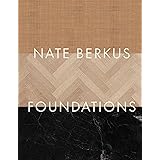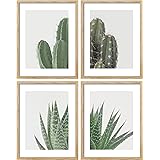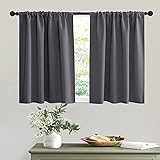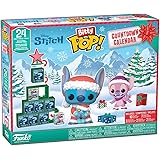Unlock Creativity: Quick and Easy 5-Minute Crafts for Instant Fun
Boredom often strikes when least expected, leaving many searching for engaging activities. A common dilemma involves finding projects that are both simple to start and quick to finish. Fortunately, a world of creative possibilities exists, offering effortless DIY ideas designed for rapid gratification. These **5-minute crafts** provide a perfect solution, transforming idle moments into opportunities for making something wonderful. The video above introduces several such projects, and this article will delve deeper into each one, offering expanded insights and practical tips.Engaging in quick DIY projects offers numerous benefits. It allows for a burst of creativity without a long-term commitment. These easy crafts are ideal for unwinding after a busy day. They also serve as excellent skill-building exercises, teaching basic crafting techniques. Furthermore, the satisfaction of creating something tangible in just a few minutes is often unparalleled. This collection of **easy crafts** is designed to inspire everyone, from beginners to more seasoned DIY enthusiasts.
The beauty of these projects lies in their accessibility. Many utilize common household items or inexpensive materials. The steps involved are typically straightforward, making them approachable for all ages. By focusing on rapid assembly, the frustration often associated with complex crafts is minimized. Discovering new ways to create is made simple. Let us explore some fantastic ideas for quick crafting enjoyment.
1. Crafting a Capacitive Touchscreen Stylus
Navigating touchscreens can sometimes be challenging, especially for intricate tasks. Fingerprints can smudge the screen, or precise selections can be difficult. A homemade touchscreen stylus is an ingenious solution to this problem. The secret to its functionality lies in basic principles of electrical conductivity. This simple device allows for more accurate interaction with any capacitive screen, just like those on phones and tablets.
The core material for this stylus is often found in an empty crisp packet. Such packets possess an inner silver lining. This lining is crucial for the stylus’s operation. After consuming the crisps, the bag is meticulously cleaned. All traces of oil and residue must be removed. A face wipe or soapy water is effectively used for this cleaning process. Next, a piece of this clean, silver-lined material is carefully cut. It needs to be slightly longer than a small pencil. These pencils are frequently obtained for free from stores such as IKEA.
The foil piece is then wrapped around the pencil, with the silver side facing outwards. This ensures proper contact for conductivity. Tape is applied to secure the foil firmly in place. The ends are folded and stuck together for a neat finish. For the stylus to work, the exposed foil must be touched by your hand. This action allows skin capacitance to be conducted to the screen. It is fascinating to observe this simple technology in action. If the stylus does not initially respond, a slightly larger tip usually resolves the issue. A wedge-shaped tip is often more effective than a pointed one, ensuring a broader contact area with the screen.
2. The Magic of No-Glue Fluffy Slime
Slime has become a global phenomenon, captivating many with its unique texture. Traditional slime recipes often require polyvinyl acetate (PVA) glue, which is sometimes hard to acquire. This alternative method presents a fluffy slime that bypasses the need for conventional glue entirely. It offers a different, yet equally enjoyable, tactile experience. This innovation makes slime accessible to a wider audience, using surprising ingredients.
The foundation of this unique slime creation involves peel-off face masks. These masks typically contain PVA, making them an excellent substitute for glue. Four peel-off face masks, or approximately 32 milliliters, are commonly used. The recipe is quite forgiving, allowing for slight variations in amounts. Shaving foam or shower foam is then added to the face mask mixture. A well-known brand like Bilou, recognizable by German viewers, can be used. The foam is squeezed in and thoroughly mixed until fully combined. Adding more foam increases the volume, but the mixture should remain slightly sticky. The desired consistency resembles whipped egg whites, airy and light.
Four pinches of baking soda are then introduced and mixed again. Food coloring can be incorporated at this stage. This allows for personalization, matching the slime’s appearance to its scent. For instance, a strawberry, vanilla, and bubblegum-scented foam might inspire pink coloring. Finally, a squirt of contact lens solution is added. This acts as the activator, bringing the slime together. Face mask slime often remains softer for longer periods. It also tends to avoid the common issue of turning smelly, which can happen with glue-based slimes. The resulting texture is bouncy and jelly-like, reminiscent of bubblegum.
3. Enchanting Floral Unicorn Hairbands
Unicorn-themed accessories remain incredibly popular, adding a touch of whimsy to any outfit. While some crafts demand extensive effort, others offer immediate gratification. This particular DIY project, though based on a kit, delivers stunning results in minimal time. It proves that not all beautiful creations require hours of intricate work. The charm of this project lies in its simplicity and visual appeal.
Many craft kits now offer comprehensive solutions for quick projects. One such kit, the “Floral Unicorn” from an Etsy shop like Pretty in Pink, simplifies the process. These kits often contain a satin hairband, a gold unicorn horn, felted stickers, fabric flowers, and paper flowers. The quality of components in such kits is often surprisingly high. Though instructions may sometimes be absent, assembly is generally intuitive. This makes them ideal for last-minute gifts or party preparations.
Assembly begins by attaching a felt circle to the center of the hairband. Additional felt pieces are glued underneath the hairband. This technique ensures comfort when worn. It also prevents hair from snagging on the decorations. The gold horn is then hot-glued onto the central felt piece. Flowers are arranged along the sides of the horn. Smaller flowers are used to fill any remaining gaps. Exposed wires are also covered with hot glue, ensuring a polished look. The finished hairband is light and comfortable. It avoids the pinching sensation associated with many plastic or metal bands. This project beautifully illustrates how easy crafting can yield professional-looking results.
4. Custom Starbucks Charm Creation
Personalizing accessories is a popular way to express individuality. Starbucks, with its iconic logo, provides an accessible source for unique craft elements. Transforming a simple cup logo into a charming accessory takes mere minutes. This particular **easy craft** allows for the creation of keyrings or decorative items. It is a testament to how everyday objects can be repurposed creatively.
The primary material required is a clear Frappuccino cup from Starbucks. Extra cups are often obtainable for free by simply asking. The logo is carefully cut from the cup, leaving a very small edge. This preserves the design integrity. A hole punch is then prepared by removing its base. The cut-out logo is slid into the punch’s slot. Positioning is crucial; the edges of the star on the siren’s crown should be visible. A hole is then punched directly through the center of the star. This creates a perfect attachment point for a keyring or chain.
While the basic charm is a 5-minute craft, it can be easily embellished. Adding DIY pom-poms, which are discussed later, can enhance its visual appeal. Applying clear glittery nail polish offers a frosted or sparkling effect. These simple additions transform the basic charm into a more personalized item. The process is a clever example of upcycling. It allows fans to carry a piece of their favorite coffee experience with them. Such small, customized items make thoughtful, handmade gifts.
5. Adorable Mini Macaron Squishies
Squishies have gained immense popularity as tactile stress relievers and collectible items. Their soft, squeezable texture provides a comforting sensation. Crafting miniature macaron squishies at home is surprisingly simple. This project utilizes readily available beauty supplies, making it an accessible DIY. It combines the aesthetic appeal of a popular dessert with the sensory joy of a squishy.
The foundation for these squishies consists of mini makeup blenders. These are often purchased affordably from drugstores or fashion retailers like Primark. Two blenders of the same color are needed for each macaron. The base of each blender is carefully trimmed to resemble a macaron shell. The remaining top part can still be used as a beauty blender, minimizing waste. Once the trimmed bases are brought together, they already bear a striking resemblance to actual macarons. This initial shaping step is crucial for the final aesthetic.
The filling for these macarons involves plain white silicone or Deco Cream. These materials mimic the creamy center of a real macaron. The cream is carefully piped onto one half of the macaron. Care must be taken to avoid getting it on the fingers, as silicone is difficult to remove. If skin contact occurs, rubbing it off with a cheap plastic bag is recommended. Once the cream reaches about 5 millimeters in thickness, the second macaron half is gently pressed on top. An eye pin can be inserted at this stage. This converts the macaron into a charm or necklace pendant. The finished squishies must then be left to dry for 24 hours. This curing period ensures their durability and softness.
6. Two-Ingredient Scented Play-Doh Delight
Sensory play is vital for relaxation and concentration, appealing to both children and adults. Commercial Play-Doh offers a fantastic sensory experience, but a homemade version provides unique benefits. This particular recipe stands out for its simplicity, requiring only two ingredients. It creates a scented dough that is both fun to make and wonderfully stress-relieving. The absence of complex components makes it an ideal spontaneous activity.
The process begins with scooping cornstarch into a bowl. Precise measurements are not strictly necessary for this forgiving recipe. Body lotion is then added to the cornstarch. The mixture is thoroughly combined until a thick, uniform dough forms. This kneading process itself can be therapeutic. The dough’s texture is designed for manipulation. It offers a satisfying tactile experience. Engaging with such materials is often shown to aid concentration during study periods or other mentally demanding tasks. This makes it a great desk companion.
It is important to note that this creation is not a slime. Slime, by definition, stretches when pulled. This dough, in contrast, tends to fall apart. While some might mistakenly label it as “butter slime,” true butter slime typically involves mixing actual slime with clay. However, this scented dough still offers immense enjoyment. Its fragrance and color can be customized using different types of body lotions. This allows for endless variations, making each batch a new discovery. The tactile sensation and customizable aromas contribute to its appeal as a calming activity.
7. Crafting Delicate Jelly Whip Bracelets
Jewelry making often evokes images of intricate tools and delicate materials. However, some methods allow for the creation of beautiful accessories with surprising simplicity. These delicate bracelets, fashioned from jelly whip, offer an elegant, crystal-like appearance. They are perfect for expressing personal style or for gifting. The unique properties of jelly whip make this a fascinating **DIY idea**.
Preparation begins with spreading out a non-stick baking mat or parchment paper. This surface prevents the jelly whip from sticking. Dental floss is used to measure the wrist for the bracelet’s length. The cut floss is then taped onto the mat, serving as a guide. The tip of a jelly whip tube is trimmed, allowing only a tiny amount to be dispensed. Small dots are carefully piped along the dental floss. This creates a beaded line, forming the bracelet’s structure. Jelly whip is delightful to work with, often possessing pleasant scents like peach. For a wider bracelet, three pieces of dental floss can be braided together. This provides a larger surface area for piping, enhancing the crystal effect with gradient colors.
After the piping is complete, the bracelets must be left undisturbed for about a day. This drying time is crucial for proper setting. Resistance to touching is key during this period. Once fully dry, the bracelets are easily peeled off the baking mat. The finished pieces look adorable, often exceeding initial expectations. Jewelry findings can be attached to the ends for a more conventional closure. Alternatively, they can be tied onto the wrist like a friendship bracelet. Experimentation with different jelly whip colors on a single bracelet can lead to even more charming designs. For entrepreneurs, these bracelets could even be crafted to match clear slimes sold in a craft shop.
8. The Art of Folding Paper Stars
Paper stars hold a special cultural significance in many parts of Asia, often associated with wishes and good fortune. This timeless craft is both relaxing and meditative, providing a soothing activity. Making these stars is a simple yet engaging process, perfect for occupying hands while watching videos. The craft offers a tangible connection to traditional pastimes.
The first step involves selecting suitable paper. Crafting paper pads with gorgeous designs are ideal, but scrapbook paper, wrapping paper, or even magazine pages can be used. Strips of paper, approximately 1 centimeter wide, are measured and cut. Some paper designs might already feature stripes, simplifying the cutting process. The true magic begins by tying one end of a strip into a loose knot. This action naturally forms a pentagon shape. Holding the paper lightly is essential to prevent crumpling or tearing. Unlike some methods, pressing down the edges at this stage is strongly discouraged, as it complicates later steps.
The remaining strip is then wrapped around the sides of the pentagon. The natural angles of the pentagon guide the wrapping direction. It is important to follow these angles to maintain the star’s puffy edges. Incorrect angles result in flat, less attractive stars. The sides are then gently pinched inwards to create the star’s characteristic points. This final pinching is much easier if the sides have not been pressed flat previously. Making these stars is a deeply relaxing activity. As children, many believed that filling a glass jar with these stars would bring happiness and good luck. This tradition encourages persistent crafting, turning a simple hobby into a hopeful endeavor.
9. Super Fluffy Felting Wool Pom-Poms
Pom-poms are versatile embellishments, adding a playful touch to various crafts and accessories. While traditional pom-poms often utilize knitting wool, an alternative method using felting wool yields a more refined product. Felting wool pom-poms possess a professional finish, often resembling those found on store-bought items. This technique allows for a higher quality result, elevating the simple pom-pom.
Felting wool is readily available at most craft stores. It is also an excellent way to repurpose leftover wool from needle-felting kits. The process begins by tearing off a piece of wool. This piece is then wrapped around a fork. The amount of wool determines the pom-pom’s final fluffiness. Dental floss is then threaded through the fork’s tines. It is used to tie the wrapped wool tightly through its center. Dental floss is preferred for its superior strength compared to standard thread. This ensures the pom-pom remains securely bound.
The wool is then slid off the fork. The loops on the sides are carefully cut open. If difficulty is encountered during cutting, it usually indicates the wool was wrapped too tightly. A looser wrap is recommended for subsequent attempts. Once cut, the pom-pom is fluffed up. Scissors are used to trim it into a perfectly round shape. These felting wool pom-poms offer a distinct advantage. Their texture and appearance are more professional than standard wool versions. They mirror the quality seen on commercial accessories and craft kits. The key to durability is ensuring the wool is tied as firmly as possible. Pressing the knot into place or having assistance during tying off the ends helps secure the structure. Experimenting with different wool amounts creates various sizes. Combining different colors within a single pom-pom yields unique designs.
10. A Simple No-Heat Lip Balm Recipe
Homemade lip balms offer a personalized alternative to commercial products. Many recipes require heating ingredients to achieve a smooth consistency. However, a simpler, no-heat method exists, perfect for quick preparation. This recipe relies on coconut oil as its base, making it incredibly straightforward. It is an excellent choice for those seeking a fast and effective beauty **DIY idea**.
This method is most effective in cooler climates, specifically where temperatures remain below 25 degrees Celsius. Above this threshold, coconut oil will naturally turn liquid. The process begins with scooping two teaspoons of coconut oil onto plastic wrap. Color is then introduced. Eyeshadow pigments, powdered blush, or even a tiny piece of lipstick can be used. Food-safe glitter or luster dust is also an option. These additions provide a frosty or shimmering effect, enhancing the lip balm’s visual appeal. The chosen color and shimmer are mixed directly into the coconut oil.
The mixture is then wrapped tightly in cling film. Body heat is used to gently melt the ingredients together. Squeezing the wrapped mixture ensures even blending of the color and oil. A small, watertight container is essential for storage. Testing the container with water beforehand is highly recommended. This precaution prevents leakage should the coconut oil liquefy. The blended lip balm is then scooped into the pot. It is placed in the fridge until it sets firmly. This quick and easy formulation allows for boundless creativity. Various color combinations are explored, leading to unique custom lip balms. These **5-minute crafts** provide practical and enjoyable outcomes.











